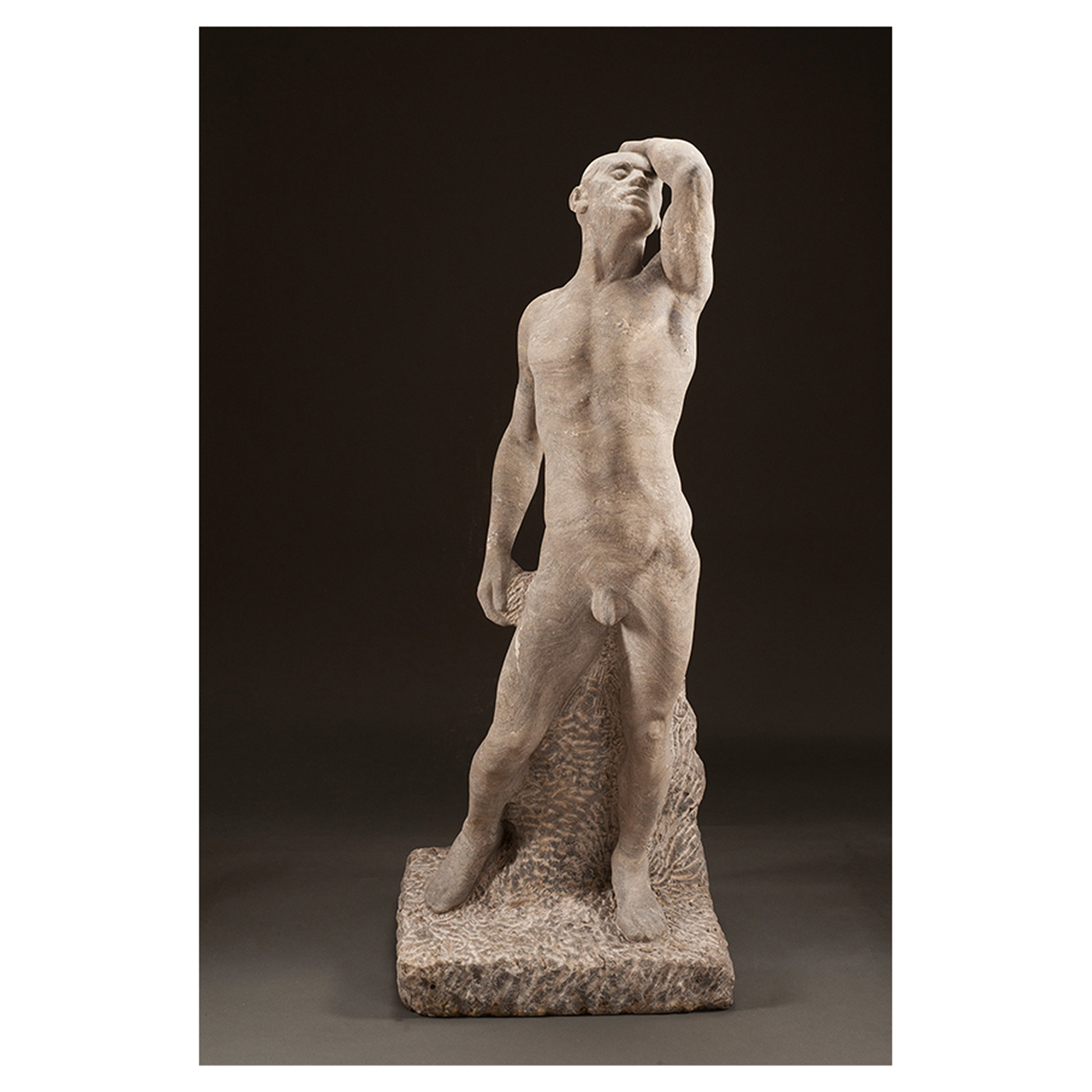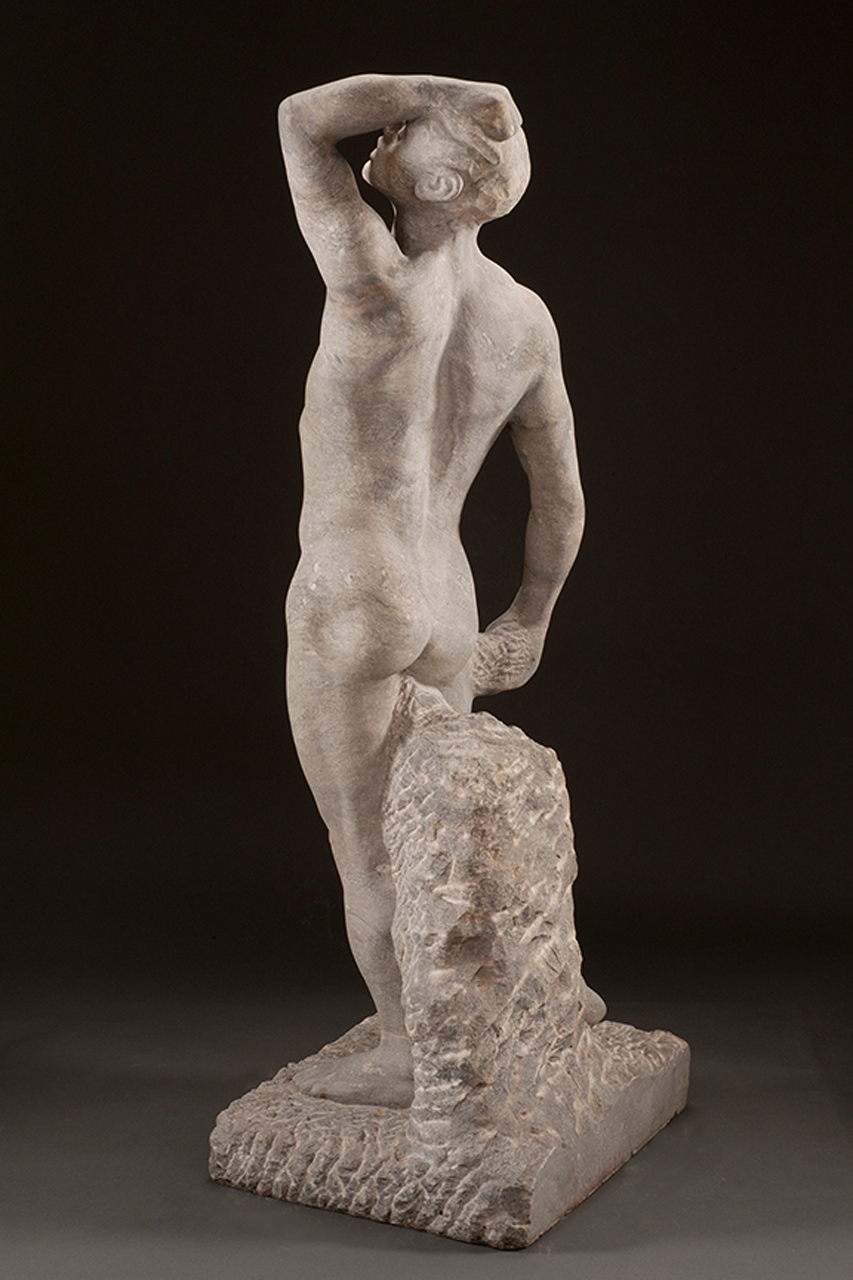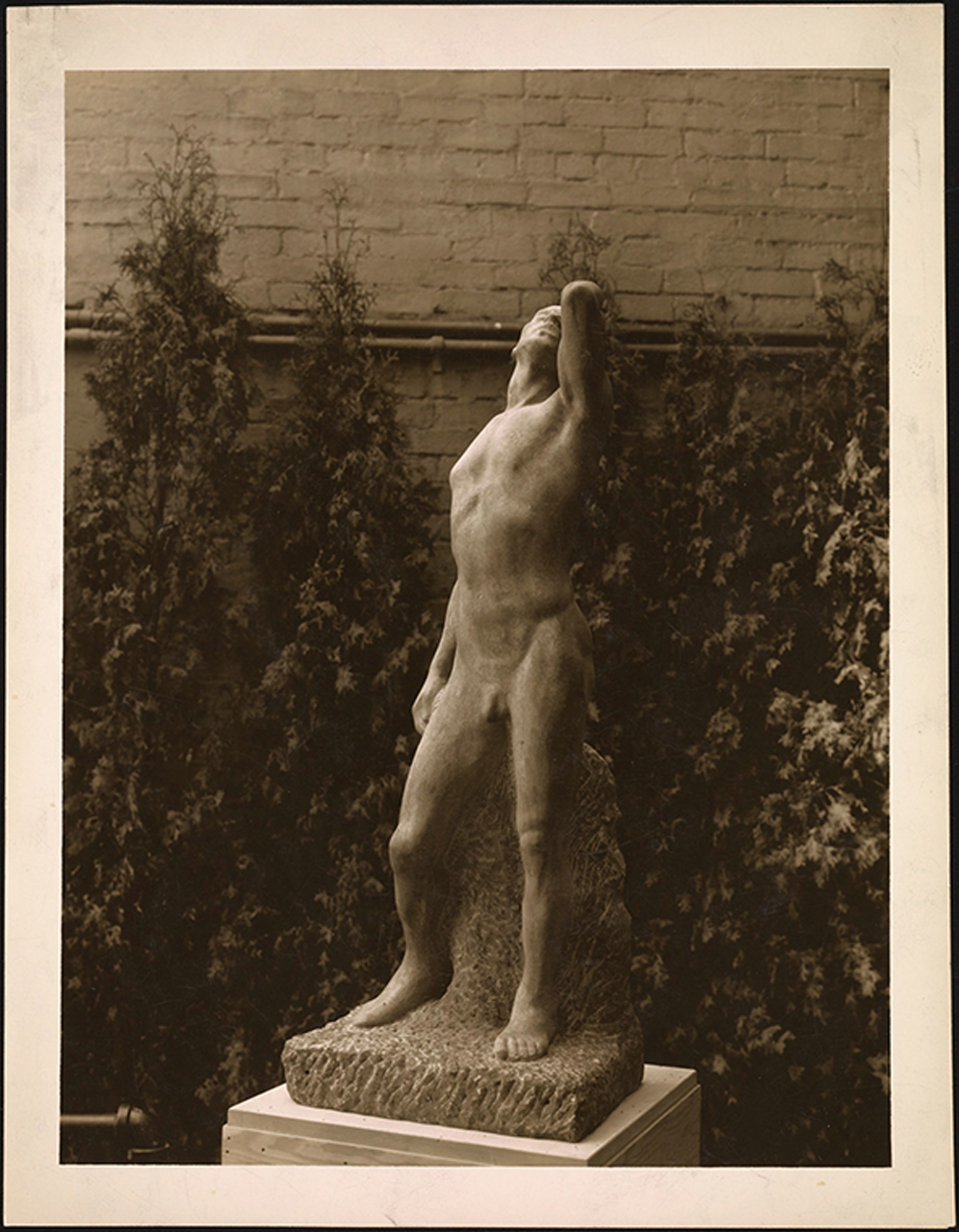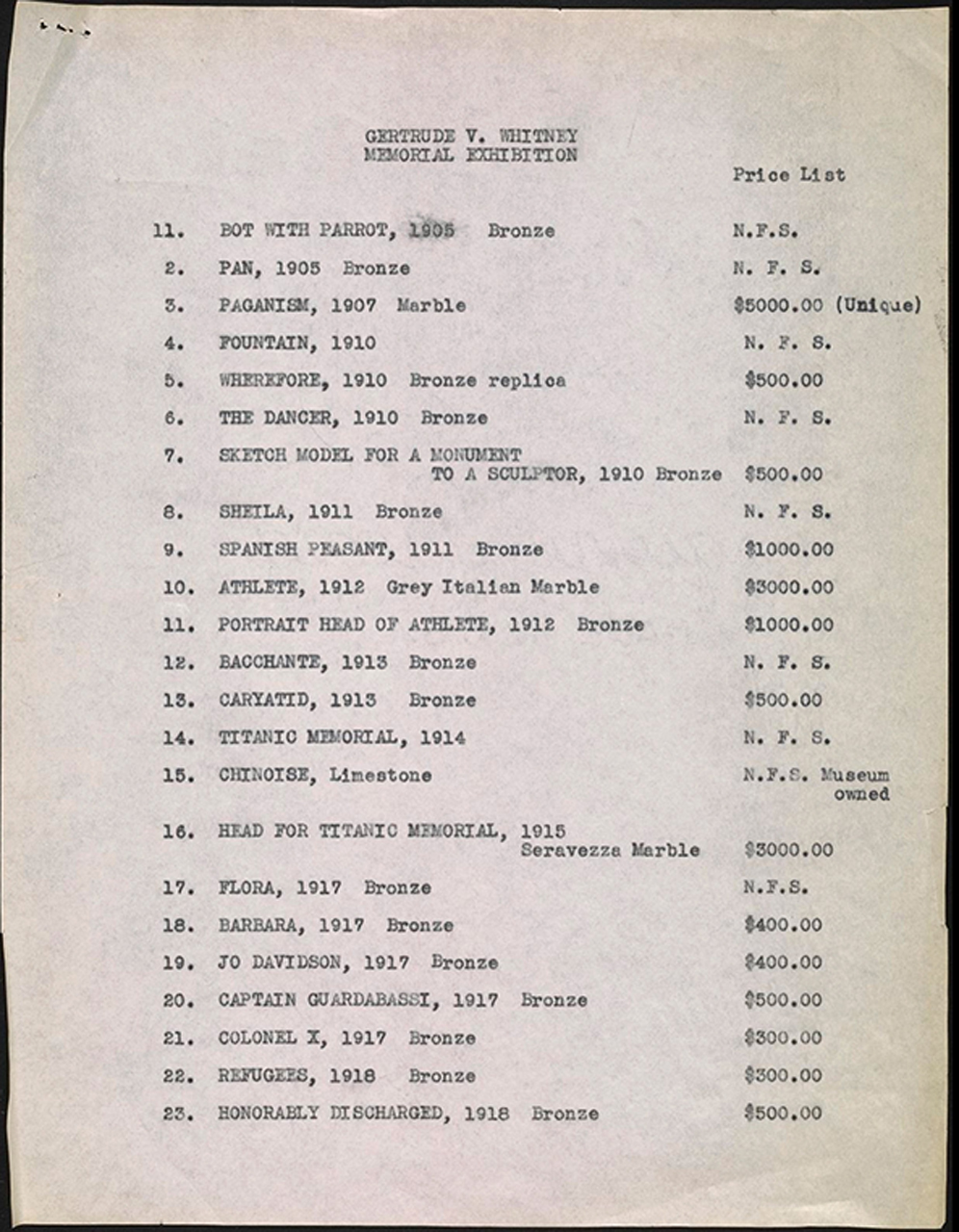2020 Fine Sporting Art, American Paintings, and Sculpture
45| Gertrude Vanderbilt Whitney
Athlete
Exhibited: Gertrude Vanderbilt Whitney Memorial Exhibition. Whitney Museum of American Art, New York. 1943 #10Gertrude Vanderbilt Whitney played a crucial role in the American art world during her lifetime ‚Äî both as a patron of the arts and as an artist ‚Äî and her contributions continue to shape the landscape of American art to this day. Gertrude Vanderbilt, the daughter of Cornelius Vanderbilt II, was born into a world of enormous wealth, privilege, and social prominence, and her marriage to Harry Payne Whitney in 1896 brought two of the country’s most powerful families together. Wealth and social standing allowed Whitney to make many contributions to the art world, most notably the creation of the Whitney Museum of American Art. Fame and fortune, however, can be a double-edged sword, for while Whitney’s wealth and social standing afforded her great respect as a patron of the arts, she felt constrained by them as an artist.In the late 19th century it seems all women of society’s upper echelon dabbled as artists, learning to paint small floral watercolors. This stereotype diminished the reputation of several highly talented female artists of that period. Facing disapproval from those around her and fearing her name would not allow people to view her work with an unbiased eye, for nearly 10 years Whitney entered her sculptures in exhibitions using a pseudonym. Gertrude Vanderbilt Whitney was an excellent sculptor, first working in the style of Rodin and later sculpting in the style of her friends in the Ashcan School. In 1910, her statue Paganism Immortal won a distinguished rating at the National Academy, validating her determination and ability, after which time she exhibited under her real name.Whitney ultimately gained a reputation as a well-respected American sculptor and exhibited her pieces in many group and solo exhibitions in the United States and abroad. The present sculpture is carved out of Italian marble and is a one- of-a-kind piece, titled Athlete. The piece, created in 1912, is a fine example of the artist’s naturalistic style and shows the influence Rodin had upon Whitney’s early works. (It is worth noting that it was quite unusual for a woman of any class, let alone high society, to sculpt anatomically correct male nudes in 1912, eight years before women gained the right to vote in the United States).Athlete was exhibited in The Gertrude Vanderbilt Whitney Memorial Exhibition in 1943 and has remained in a private family collection in the years since. The Norton Museum in West Palm Beach, Florida held an exhibition of Whitney’s work in the winter of 2018, the first exhibition of the artist’s work since the memorial exhibition in 1943. The exhibition was greeted with tremendous enthusiasm and will spend the next two years traveling to different U.S. museums, giving the public a rare chance to view the important works of an exceptionally talented American artist.
Italian marble, unique, 42.5" x 16.5"
40000 - 60000
Exhibited: Gertrude Vanderbilt Whitney Memorial Exhibition. Whitney Museum of American Art, New York. 1943 #10Gertrude Vanderbilt Whitney played a crucial role in the American art world during her lifetime — both as a patron of the arts and as an artist — and her contributions continue to shape the landscape of American art to this day. Gertrude Vanderbilt, the daughter of Cornelius Vanderbilt II, was born into a world of enormous wealth, privilege, and social prominence, and her marriage to Harry Payne Whitney in 1896 brought two of the country's most powerful families together. Wealth and social standing allowed Whitney to make many contributions to the art world, most notably the creation of the Whitney Museum of American Art. Fame and fortune, however, can be a double-edged sword, for while Whitney's wealth and social standing afforded her great respect as a patron of the arts, she felt constrained by them as an artist.In the late 19th century it seems all women of society's upper echelon dabbled as artists, learning to paint small floral watercolors. This stereotype diminished the reputation of several highly talented female artists of that period. Facing disapproval from those around her and fearing her name would not allow people to view her work with an unbiased eye, for nearly 10 years Whitney entered her sculptures in exhibitions using a pseudonym. Gertrude Vanderbilt Whitney was an excellent sculptor, first working in the style of Rodin and later sculpting in the style of her friends in the Ashcan School. In 1910, her statue Paganism Immortal won a distinguished rating at the National Academy, validating her determination and ability, after which time she exhibited under her real name.Whitney ultimately gained a reputation as a well-respected American sculptor and exhibited her pieces in many group and solo exhibitions in the United States and abroad. The present sculpture is carved out of Italian marble and is a one- of-a-kind piece, titled Athlete. The piece, created in 1912, is a fine example of the artist's naturalistic style and shows the influence Rodin had upon Whitney's early works. (It is worth noting that it was quite unusual for a woman of any class, let alone high society, to sculpt anatomically correct male nudes in 1912, eight years before women gained the right to vote in the United States).Athlete was exhibited in The Gertrude Vanderbilt Whitney Memorial Exhibition in 1943 and has remained in a private family collection in the years since. The Norton Museum in West Palm Beach, Florida held an exhibition of Whitney's work in the winter of 2018, the first exhibition of the artist's work since the memorial exhibition in 1943. The exhibition was greeted with tremendous enthusiasm and will spend the next two years traveling to different U.S. museums, giving the public a rare chance to view the important works of an exceptionally talented American artist.
Exhibited: Gertrude Vanderbilt Whitney Memorial Exhibition. Whitney Museum of American Art, New York. 1943 #10Gertrude Vanderbilt Whitney played a crucial role in the American art world during her lifetime — both as a patron of the arts and as an artist — and her contributions continue to shape the landscape of American art to this day. Gertrude Vanderbilt, the daughter of Cornelius Vanderbilt II, was born into a world of enormous wealth, privilege, and social prominence, and her marriage to Harry Payne Whitney in 1896 brought two of the country's most powerful families together. Wealth and social standing allowed Whitney to make many contributions to the art world, most notably the creation of the Whitney Museum of American Art. Fame and fortune, however, can be a double-edged sword, for while Whitney's wealth and social standing afforded her great respect as a patron of the arts, she felt constrained by them as an artist.In the late 19th century it seems all women of society's upper echelon dabbled as artists, learning to paint small floral watercolors. This stereotype diminished the reputation of several highly talented female artists of that period. Facing disapproval from those around her and fearing her name would not allow people to view her work with an unbiased eye, for nearly 10 years Whitney entered her sculptures in exhibitions using a pseudonym. Gertrude Vanderbilt Whitney was an excellent sculptor, first working in the style of Rodin and later sculpting in the style of her friends in the Ashcan School. In 1910, her statue Paganism Immortal won a distinguished rating at the National Academy, validating her determination and ability, after which time she exhibited under her real name.Whitney ultimately gained a reputation as a well-respected American sculptor and exhibited her pieces in many group and solo exhibitions in the United States and abroad. The present sculpture is carved out of Italian marble and is a one- of-a-kind piece, titled Athlete. The piece, created in 1912, is a fine example of the artist's naturalistic style and shows the influence Rodin had upon Whitney's early works. (It is worth noting that it was quite unusual for a woman of any class, let alone high society, to sculpt anatomically correct male nudes in 1912, eight years before women gained the right to vote in the United States).Athlete was exhibited in The Gertrude Vanderbilt Whitney Memorial Exhibition in 1943 and has remained in a private family collection in the years since. The Norton Museum in West Palm Beach, Florida held an exhibition of Whitney's work in the winter of 2018, the first exhibition of the artist's work since the memorial exhibition in 1943. The exhibition was greeted with tremendous enthusiasm and will spend the next two years traveling to different U.S. museums, giving the public a rare chance to view the important works of an exceptionally talented American artist.
To Leave An Absentee Bid, Please Enter An Amount Below




